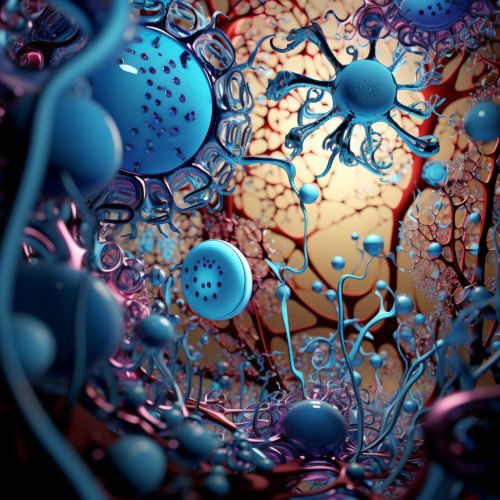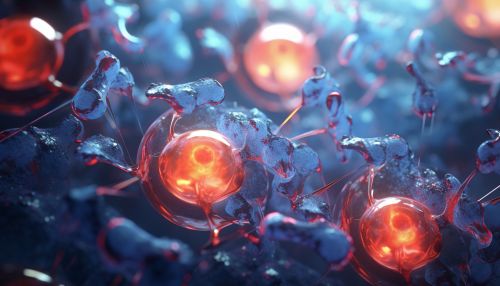Bioorthogonal Reactions
Introduction
Bioorthogonal reactions are a class of chemical reactions that can occur inside living organisms without interfering with native biochemical processes. These reactions are characterized by their ability to proceed in a biological environment, and are typically fast, selective, and biocompatible. They are used in a variety of applications, including the study of biological systems, the development of new therapeutic strategies, and the creation of novel biomaterialsBioorthogonal Chemistry.


History and Development
The concept of bioorthogonal reactions was first introduced by Carolyn R. Bertozzi, a professor of chemistry at the University of California, Berkeley, in the late 1990s. Bertozzi and her team developed the first bioorthogonal reaction, the Staudinger ligation, as a method for labeling biomolecules in living cellsCarolyn Bertozzi. Since then, a number of other bioorthogonal reactions have been developed, including the copper-catalyzed azide-alkyne cycloaddition (CuAAC), the strain-promoted azide-alkyne cycloaddition (SPAAC), and the tetrazine ligation.
Mechanism
Bioorthogonal reactions are typically characterized by a high degree of selectivity and efficiency. They are designed to occur under physiological conditions, and to avoid interfering with the complex and delicate biochemical processes that occur within living cells. This is achieved by using reaction partners that are not found in biological systems, and that do not react with the functional groups found in biomolecules.
The mechanism of a bioorthogonal reaction depends on the specific reaction in question. For example, in the Staudinger ligation, a phosphine reacts with an azide to form an aza-ylide, which then reacts with a carbonyl group to form an amide bond. In the CuAAC and SPAAC reactions, an azide reacts with an alkyne to form a triazole ring.
Applications
Bioorthogonal reactions have a wide range of applications in the study of biological systems and the development of new therapeutic strategies. They can be used to label biomolecules in living cells, to track the movement of molecules within cells, to study protein-protein interactions, and to create novel biomaterials.
One of the most common applications of bioorthogonal reactions is in the field of chemical biology, where they are used to label and visualize biomolecules in living cells. This can be achieved by incorporating a bioorthogonal functional group into a biomolecule of interest, and then reacting this group with a fluorescent probe in a bioorthogonal reaction. This allows the biomolecule to be visualized using fluorescence microscopy.
Bioorthogonal reactions are also used in the development of new therapeutic strategies. For example, they can be used to create antibody-drug conjugates, in which a cytotoxic drug is attached to an antibody that targets a specific cancer cell. The drug is then released inside the cancer cell, killing it.
Future Directions
The field of bioorthogonal chemistry continues to evolve, with new reactions and applications being developed all the time. One area of ongoing research is the development of new bioorthogonal reactions that are faster, more selective, and more biocompatible than existing reactions. Another area of research is the development of new applications for bioorthogonal reactions, particularly in the fields of medicine and materials science.
